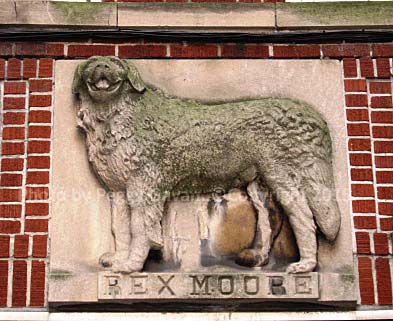
“Rex Moore died at his post. July 30, 1919, age 7. Always a most faithful and loyal friend to his master.” – Headstone for Rex Moore, Hartsdale Pet Cemetery
Ever since the apartment boom of the late 1800s, New York City architects and builders have been assigning names to apartment buildings.
According to Elizabeth Hawes, the author of “New York, New York: How the Apartment House Transformed the Life of the City (1869-1930),” building names in Old New York added respectability to what was considered a radical new way of city living. After all, it wasn’t so bad if you didn’t have a mansion but could at least say you lived at the Eldorado or San Remo.
Many apartment names reflect their surroundings or neighborhoods, while others have been inspired by favorite places. For example, Edward Clark named his famous apartment building The Dakota because he was reportedly fond of the “well sounding names” of the new western states and territories.
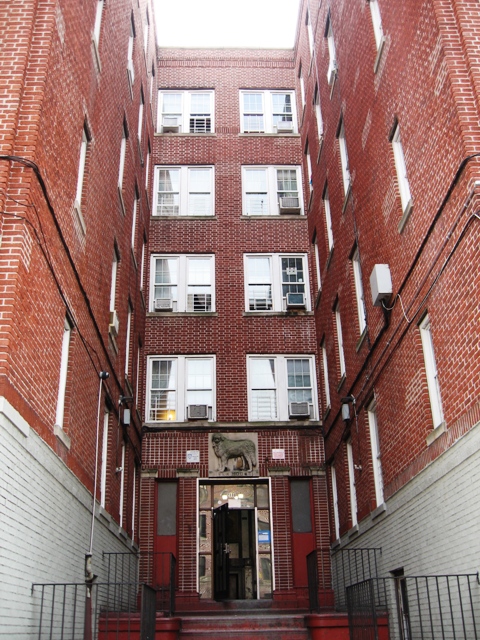
And then there is the Rex Moore, a five-story brick apartment building at 2500 University Avenue in the Fordham Manor neighborhood of the Bronx.
I can’t prove it, but I have a feeling this may be the only apartment building in New York City named for a dog – or at the very least, the only apartment in New York named after a Saint Bernard.
On the outside, the Rex Moore looks like every other cookie-cutter apartment building in the neighborhood. But look closely above the entrance-way, and you’ll see a St. Bernard panel in high relief. Walk into the lobby, and there you’ll find the same sculpture of Rex watching over a decorative fireplace.
I wonder if anyone who has lived here or passed by this otherwise plain building ever questioned the dog, or even knows that the building is called the Rex Moore?
William M. Moore Takes Over University Avenue
University Avenue takes its name from the hill on which New York University’s Bronx campus was built in 1894 (today’s Bronx Community College).
From about 1886 to 1913, the northern portion of the avenue was known as Aqueduct Avenue, in honor of the Croton Aqueduct constructed between 1837 and 1842. Other stretches of the road were at times known as Ridge Road and Lind Avenue.

Once occupied by large farms, suburban villas, and a few large mansions, Fordham Manor and the neighboring University Heights rapidly developed into an urban community of low-rise apartment buildings for the middle class when the IRT Jerome Avenue line began shuttle service between 149th Street and Kingsbridge Road in 1917.
One of the men responsible for developing this section of the West Bronx was William M. Moore, a millionaire real estate developer and builder who constructed numerous five- and six-story brick walkup apartments.
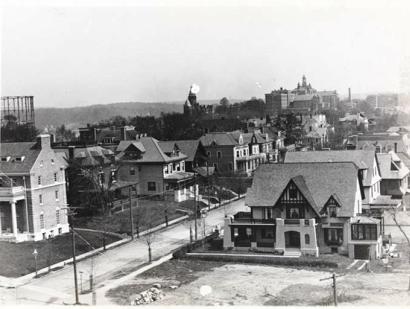
Numerous apartments along University Avenue from West 190th Street to Kingsbridge Avenue are William M. Moore buildings; he also built a few apartments in northern Manhattan and other sections of the Bronx.
William M. Moore was born in Baltimore in July 1872. Although no records of his early life exist in public archives, it is reported that he married Isabelle O. Gingell – who was nine years his senior – in 1895.
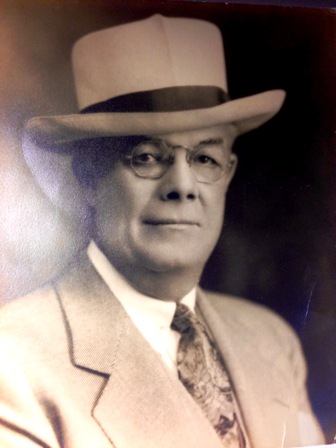
William and Isabelle had three children: Louise I. (Beezie) was born in 1897 in Baltimore, Elsia M. (Elsie) was born in New York in 1899, and Edna May was also born in New York in 1901.
According to the 1900 census, the family resided at 185 West 102nd Street. During this time, William was working as a “boss mason.”
Sometime around 1902, Isabelle passed away. A few years later, Bill married Martha Elizabeth Hentz.
It’s not clear how William got his start in real estate, but one of his first recorded transactions was in 1909, when he purchased several vacant lots on West 139th Street in the Hamilton Heights section of Manhattan.
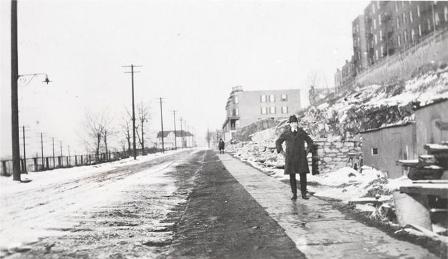
William constructed two six-story elevator apartments at 508-516 and 518-524 West 134th Street. He named these buildings the Marthmoore and the Billmoore. You can see the buildings on the top right corner of this 1924 map of Manhattan.
In April 1911, the William M. Moore Company sold the Billmoore to Oscar B. Thomas. In lieu of full payment, Oscar transferred to Martha Moore a large parcel of land at the northeast corner of University Avenue and 190th Street containing a three-story frame house and stable.
Soon thereafter, William and Martha moved into the home. It was from here that William earnestly began his real estate dynasty.
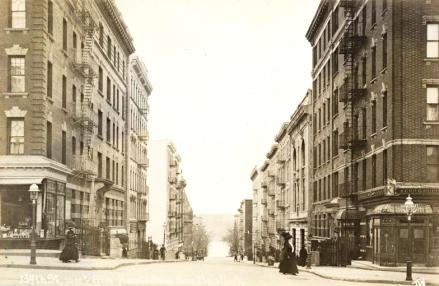
A Brief History of University Avenue
The American history of University Avenue goes back as early as 1656, when the entire area of present-day West Bronx and Yonkers was owned by Adriaen van der Donck, one of the original Dutch patroons. Following his death, Adriaen’s widow, Mary, conveyed these lands to her brother, Elias Doughty. In 1666, Elias sold the land to Mr. John Archer, a Dutchman who had settled in the village of Westchester (today’s Westchester Square).
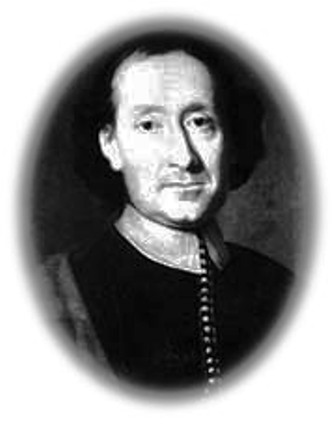
On November 13, 1671, Governor Francis Lovelace gave John Archer a patent which made him “Lord of the Manor.” Archer borrowed money on mortgage from Cornelius Steenwyck, New York’s wealthiest merchant, and established Fordham Manor on 3,300 acres of land bounded by the Harlem and Bronx rivers, High Bridge Road (today’s Fordham Road), and Spuyten Duyvil.
A small number of Dutch families from the Harlem area crossed the shallow passage through the Harlem River and settled around this crossing in Fordham Manor (hence the name Fordham: houses near the shallow place).

Because John Archer failed to make full payment before his death, all of the property reverted to Cornelius Steenwyck. Cornelius and his wife, Margaretta, later bequeathed all but 300 acres to the Reformed Protestant Dutch Church in their joint will dated November 20, 1684. The remaining 300 acres were bequeathed to John Archer’s descendants.
In 1706, the first Reformed Dutch Church was built on the James Valentine farm just north of the intersection of today’s Fordham Road and Sedgwick Avenue. The old Valentine homestead, a stone building erected around 1702, served as a parsonage for the minister.
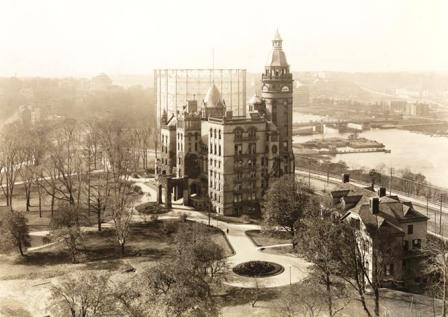
The one stipulation of the Steenwyck will was that the church could not sell or dispose of the land. However, the “tenants” of Fordham did not like having the church as their landlord, and some refused to pay rent.
On November 21, 1753, the church petitioned the General Assembly to sell the land and give that money to the church minister.
The petition was granted and all the land – except one acre for the church – was sold over the next ten years to Lewis Morris, Theophilus Hunt, Oliver Delancey, Walter Briggs, John Delancey, Isaac Valentine, Isaac Varian, Jacob Dyckman, and others.
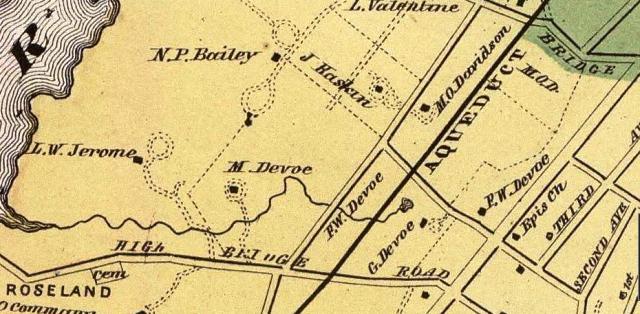
Fast forward 100 years to 1856, when Moses Devoe, a wealthy Manhattan butcher, purchased a portion of the Valentine farm, once owned by his wife’s grandfather, Peter Valentine.
This land contained the old church parsonage, which had been enlarged in 1792. Moses improved this building and made it his home.
In 1903, about 125 lots of the Moses Devoe estate were auctioned off; 45 lots were sold to the Roman Catholic Orphan Asylum while the rest were purchased by investors.

The House on the Corner of West 190th Street
According to Cindy Moore, William Moore’s granddaughter, the frame house at 2508 University Avenue was quite beautiful. William kept several thoroughbred racehorses in the two-story frame stable, and he also had several dogs, including an Irish setter named Mickey Moore II, a black and tan dachshund, and Rex.
Bill Moore’s great-grandaughter, Pam Pearce, said that Rex was a much-loved dog among all the family members.
The Moores also had a cook, Rose Maxwell, and a servant, Mary McConnell. The frame house and stable, as well as the Rex Moore and Dan Moore apartment buildings, are shown on this 1923 map.
Sadly, just two years after he and Martha moved in, Martha passed away at the home on December 29, 1913.
In 1916, William married Adelaide Cary Smith, a young widow with four children. William and Adelaide also had two children: William M. was born in 1917 and Daniel B. was born in 1918. Willliam’s faithful dog, Rex, died a year later and was buried at the Hartsdale Pet Cemetery in Westchester County.

Over the years, William Moore constructed numerous apartment buildings in the Bronx, including the Loumoore (1914) and Danmoore (1918)–named after his children–at 2512 and 2600 University Avenue; the BillZan apartments at 2725 Webb and 2719 Sedgwick Avenue (1925); 2714-2734 University Avenue; 104 West 190th (1915); 111 and 115 West 190th (now a parking lot); and several buildings on the former Ryan homestead on E. 184th Street between the Grand Concourse and Creston Avenue (1914), to name a few.
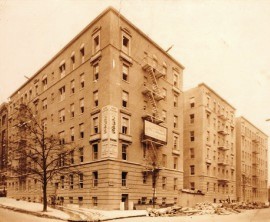
Sometime after 1926, William and Isabelle moved to 3031 Spuyten Duyvil Parkway (today’s Henry Hudson Parkway), where they lived with sons William and Daniel; Isabelle’s grown son, Richard Smith (a bricklayer); and two servants, Rose and Elizabeth Kern.
In his last few years of life, William enjoyed racing his horses, Lahor and Stretcher, at the Empire City Track (Yonkers Raceway). He died on August 3, 1934, leaving the business and his Bronx real estate legacy to his wife, sons, and sons-in-law.
The Moore Family
I recently received a note from Pam Pearce, William Moore’s great-granddaughter. Pam’s grandmother was Edna Moore — William’s third daughter with Isabelle Gingell — whom I did not know about until I received her note.
In her note, Pam wrote: “I’d love to be able to just see and even better to walk into that Rex Moore. I think that’s the one one my mother (Lucille) said they had to live in with other family members during the depression.”
Pam sent me several photos of her family, including the photo of William above, which I’d like to share here.
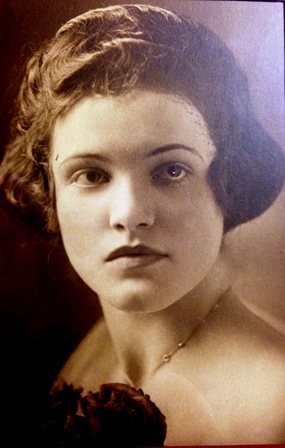
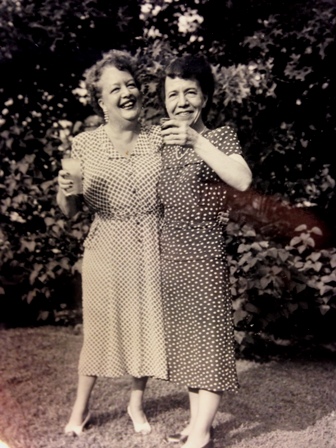
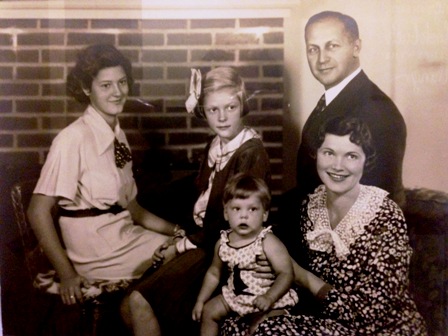






Great article, Peggy; we can see that this required much research and a lot of effort to obtain those pictures;
FYI re Rex Moore, according to an article in the New York Folklore Quarterly (Vol. IX, No. 3, Autumn, 1953, Title: Epitaphs: Hartsdale Canine Cemetery, page 222) :
“Another hero is a dog which roused tenants in the Rex Moore Apartments in New York City and saved them from fire.”
Nor sure if this canine was Rex Moore himself, tho.
BTW, please see the attached for :
“One of the most unique and charming spots, not only in New York State, but in the whole country, is The Hartsdale Canine Cemetery”
http://books.google.com/books?id=HCkyAQAAMAAJ&pg=RA1-PA120&dq=starry+dross+hartsdale&hl=en&sa=X&ei=lk1FU9qAGqm-sQTC_oCIBg&ved=0CC0Q6AEwAA#v=onepage&q=starry%20dross%20hartsdale&f=false
Regards,
Gerald
Wow, this is so interesting about the hero dog. I am going to have to dig deeper and see if I can find any more information — in all my research, I had not come across anything about a fire or rescue at the Rex Moore apartments. My curiosity is piqued. Thank you, Gerald.
If you have ever found out any more information on my great grandfather or any of his buildings, I would love to be contacted about it!
Fantastic article! I lived here (best years of my life, wonderful Neighborhood) 1962 – 1978 and then across the street at the other Moore building 75 West 190th Street. Thanks for this. A little more Bronx history that I played the critical role in last year: see attached NYTime article.
http://www.nytimes.com/2014/08/20/nyregion/from-bronck-to-the-bronx-a-name-and-a-swedish-heritage-to-celebrate.html?
Brian G. Andersson
Former NYC Commissioner, Dept. Of Records (the archives!)
Thank you, Brian. I’m so glad you enjoyed the story! My Bronx animal stories are always interesting to research and write because my father grew up in the Bronx (just south of Kingsbridge), so I have lots of memories visiting his old childhood home when I was a kid.
It’s always my hope that people who are “related” in some way to my stories — whether they are a descendent of someone or lived in a building I write about — discover them, and in turn, discover something they didn’t know before. I’m sure a lot of people walk past the Rex Moore apartments and wonder about the dog, so I hope more people come across this tale.
I also enjoyed the article you attached — I may want to use some of this information about Mr. Bronck sometime in another animal story. Thank you again (BTW, I’d probably love to have your past job, how interesting!)
Peggy